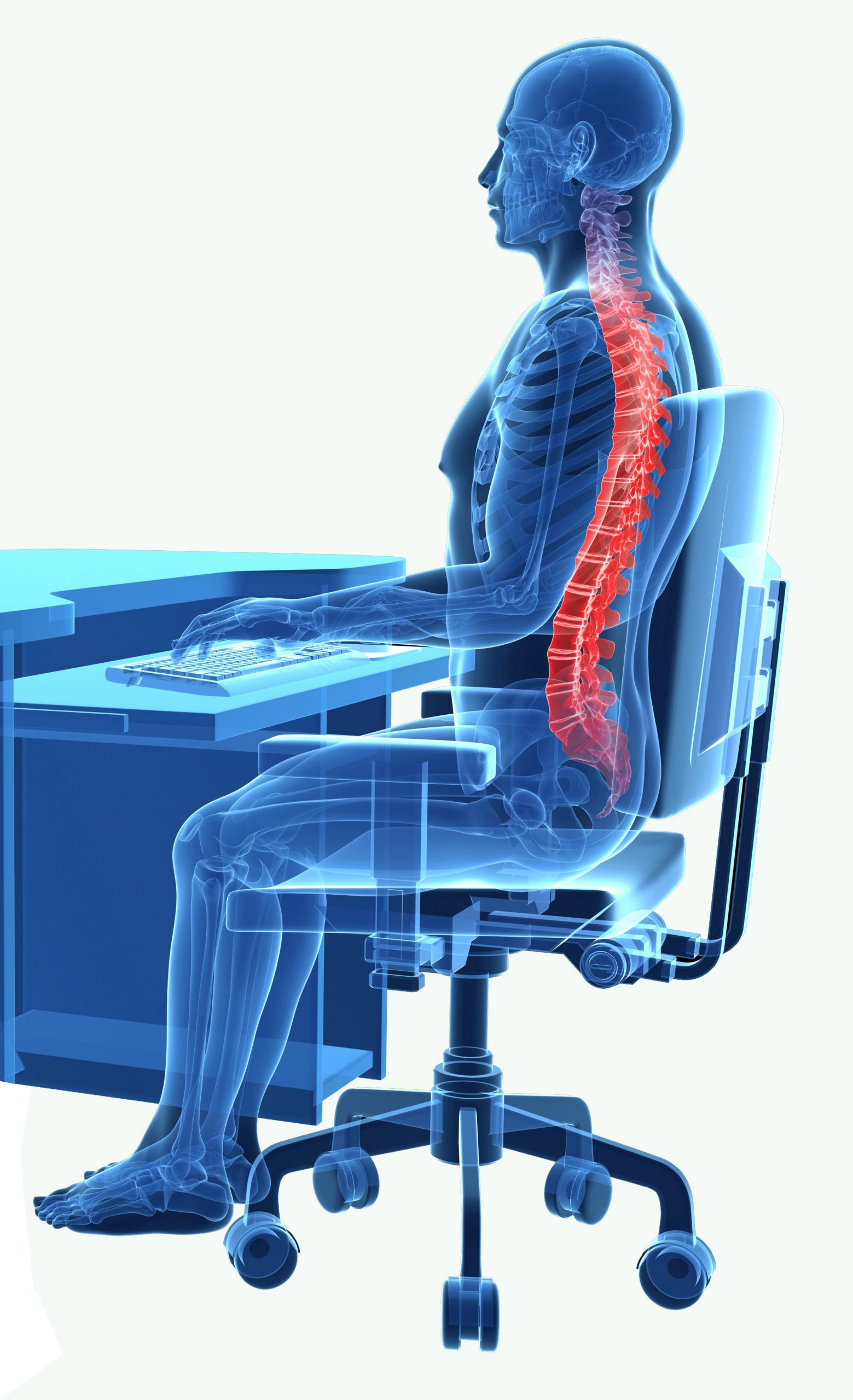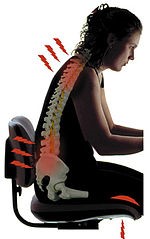Ways your office chair could be harming you
In today’s digital driven world, the majority of office jobs require employees to sit in front of a computer screen for the best part of the day. The bad news, sedentary work can adversely affect our health, and having an unsuitable seat only make matters worse.
Sitting for long periods of time, coupled with a bad seat, can have serious long-term effects on our physical and mental wellbeing. This can lead to increased levels of staff absenteeism and reduced productivity, both of which can damage your company’s bottom line. If you are worried that your office chairs might be detrimental to the health of your workers, here are some ways to help:
How seats can harm your health
Standard office chairs can cause workers to adopt awkward postures which place added strain on the back, neck, shoulders, hips and legs. While this may not be a concern in the short term, over time can lead to a number of chronic musculoskeletal problems and health complaints. In some cases, poor posture caused by sitting incorrectly can lead to more serious medical problems such as damage to the spine, repetitive strain injury (RSI), arthritis and other joint diseases. Circulation problems and varicose veins can also be triggered by poor posture when seated.

One of the main problems associated with inadequate office furniture is back pain. In fact, according to the NHS, back pain is the number one cause of long-term illness in workers in the UK – and often the problem is caused by poor seating. When seats do not provide enough back support, the natural form of the ‘S’ spine can collapse to form a ‘C’ shape, adding to pressure and strain on the discs and muscles support. As a result, ridges grow weaker because they are not able to support themselves, causing a person to adopt a stooped posture.
As well as being detrimental to your physical health, poor-quality office chairs can have a detrimental impact on your mental health. After all, there is nothing more frustrating than having to continue to shift, bend and stretch throughout the day because your seat causes you discomfort. Uncomfortable and unsafe working conditions can cause high levels of stress and anxiety, which can have a knock-on effect on the concentration, morale and productivity.
How ergonomic chairs can help
As an employer or manager, you are responsible for ensuring that staff are provided with a comfortable seat that does not pose a risk to their health and safety. When it comes to improving the well-being of your employees in the workplace, ergonomic furniture is key. For Office Furniture Gloucester, visit a site like https://www.severnfurnishing.co.uk

As well as providing a high level of comfort, ergonomic chairs help encourage the ideal sitting posture. Unlike a standard chair, the user-friendly seat is adjustable, which means that they can be modified according to the proportion of individual users to experience a more pleasant place to sit. Ergonomic office chairs are usually tailored to the back, tilt, height and armrest. A backrest should be adjusted to provide sufficient lumbar support and mimics the natural curve of the spine. The seat itself also needs to be soft and deep enough so that workers can sit comfortably for long periods. In addition, the arm of the chair should be adjusted to the right height to support the arm during a long strike typing.


